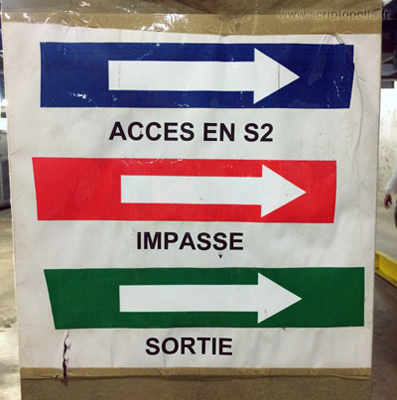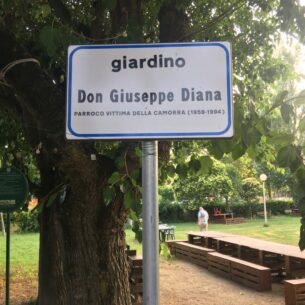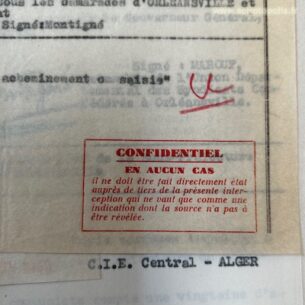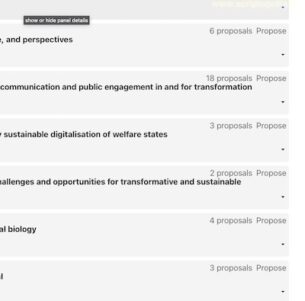All roads lead to Rome

Paris, october 2016.
In any way-finding system, arrows are key. Whether in the streets, a subway system, an airport, a park or a building, an arrow plays a crucial part in pointing to a specific site, while adding as a constant and implicit motto: “this way!”. Repeated over and over in many places, the form of such a mere sign may vary from one situation to the next, but at each occurence it points to a specific and single direction, often with the help of a simple word. In this manner, how are we supposed to understand that these three arrows point to distinct sites? How can the “access to S2”, a “dead end”, and the “exit” be reached in the same direction? On the one hand, the meaning of an arrow does not entirely stand in itself. On the contrary, as components of the same graphic system, each arrow points to another so as to design a route. If each occurence of an arrow takes place in a circumscribed sociomaterial situation, it is simultaneously conceived of as a step in a longer journey. According to sites, the “access to S2”, the “dead end”, and the “exit” slightly differ, then they point to clearly distinct, even opposite, directions. On the other hand, theses three arrows display the same white form, but each is framed by a different color. A very simple inscription, such a sign constitutes a powerful and sophisticated way-finding system. Three routes are displayed in parallel, by associating an arrow to a word and a color. Starting with this sign and following each of these associations, one can find oneself in sites that open incommensurable horizons. Successively an isolated point, a situated connection and a line, the arrow is an amazing operator of links between instants, sites, and futures.






